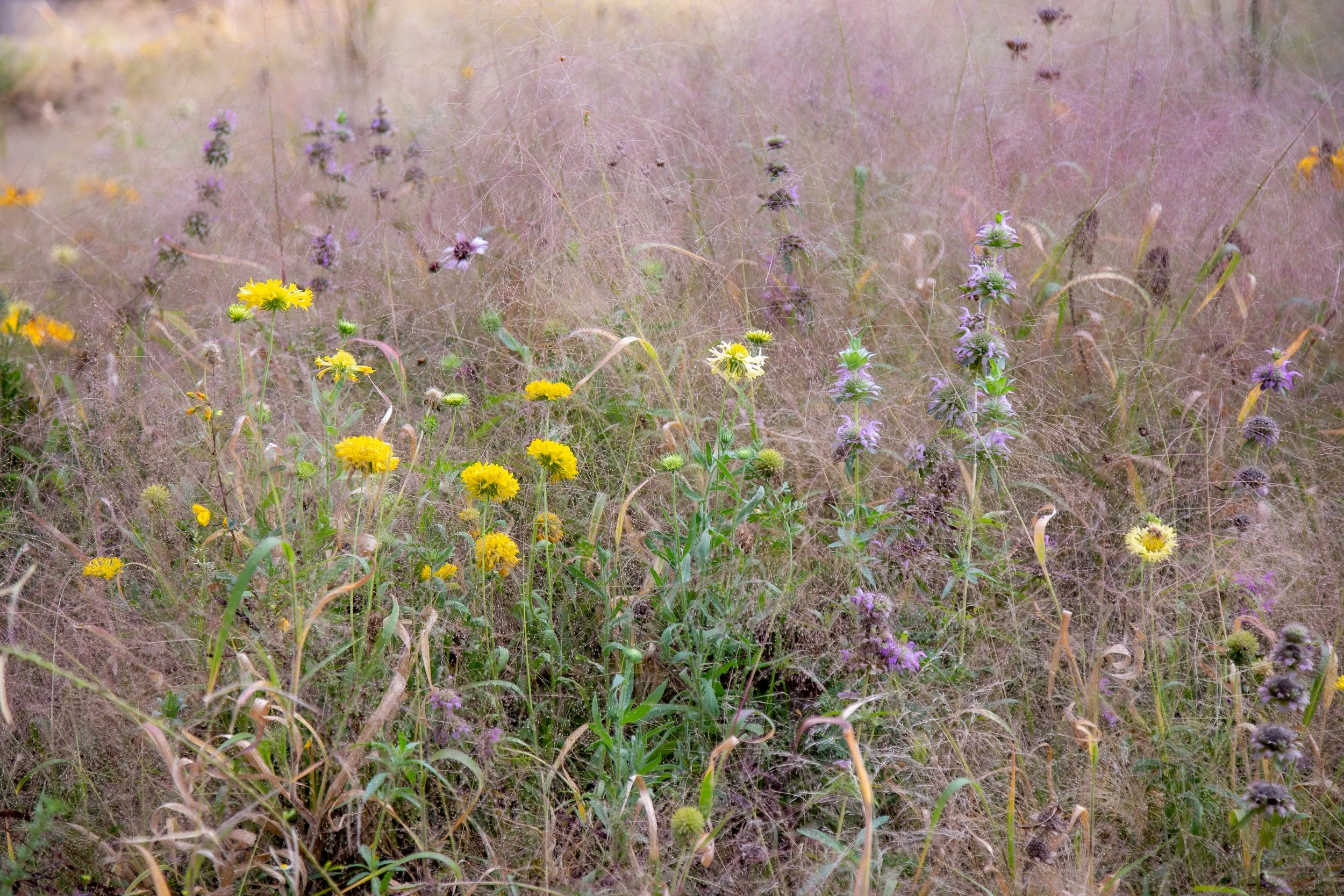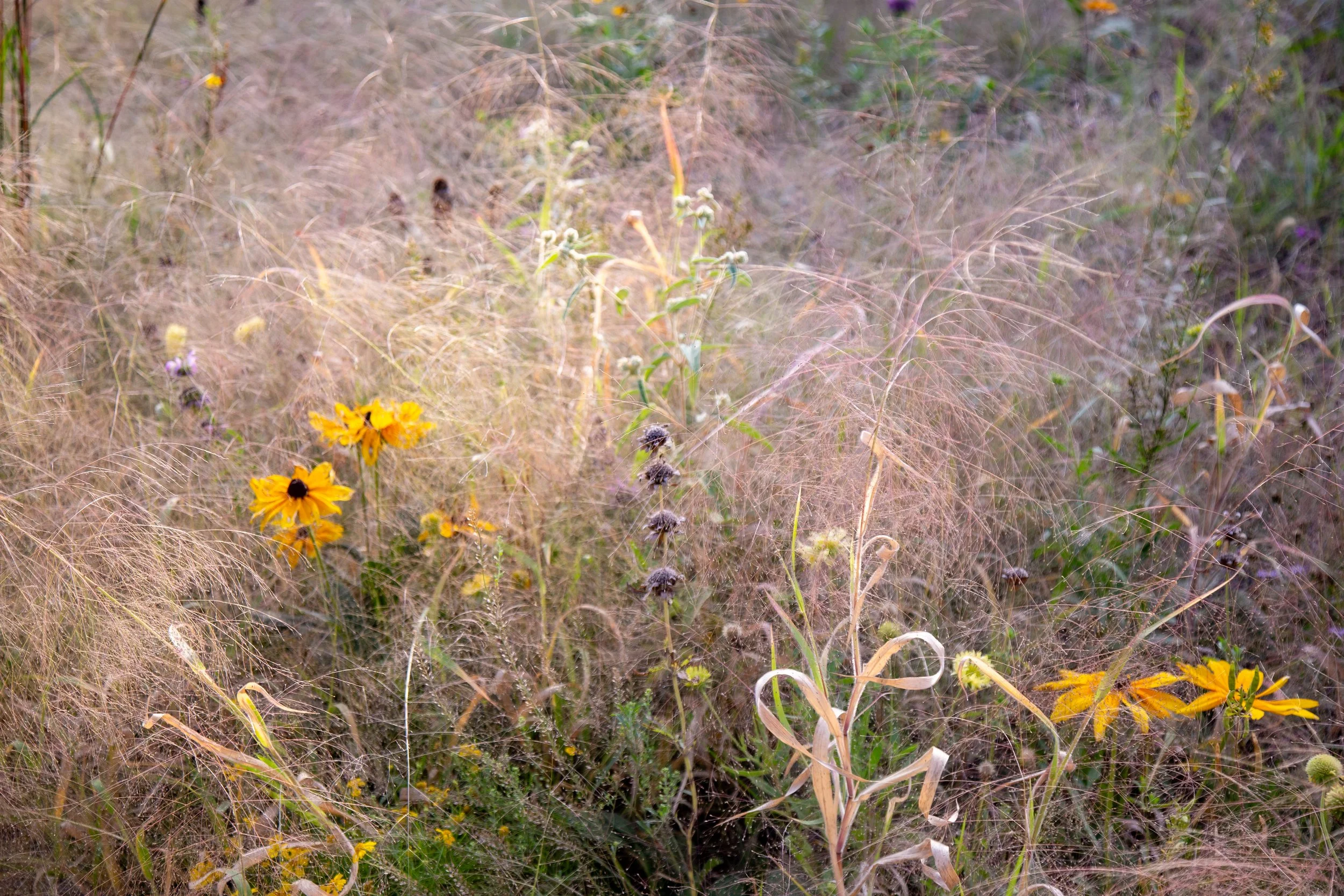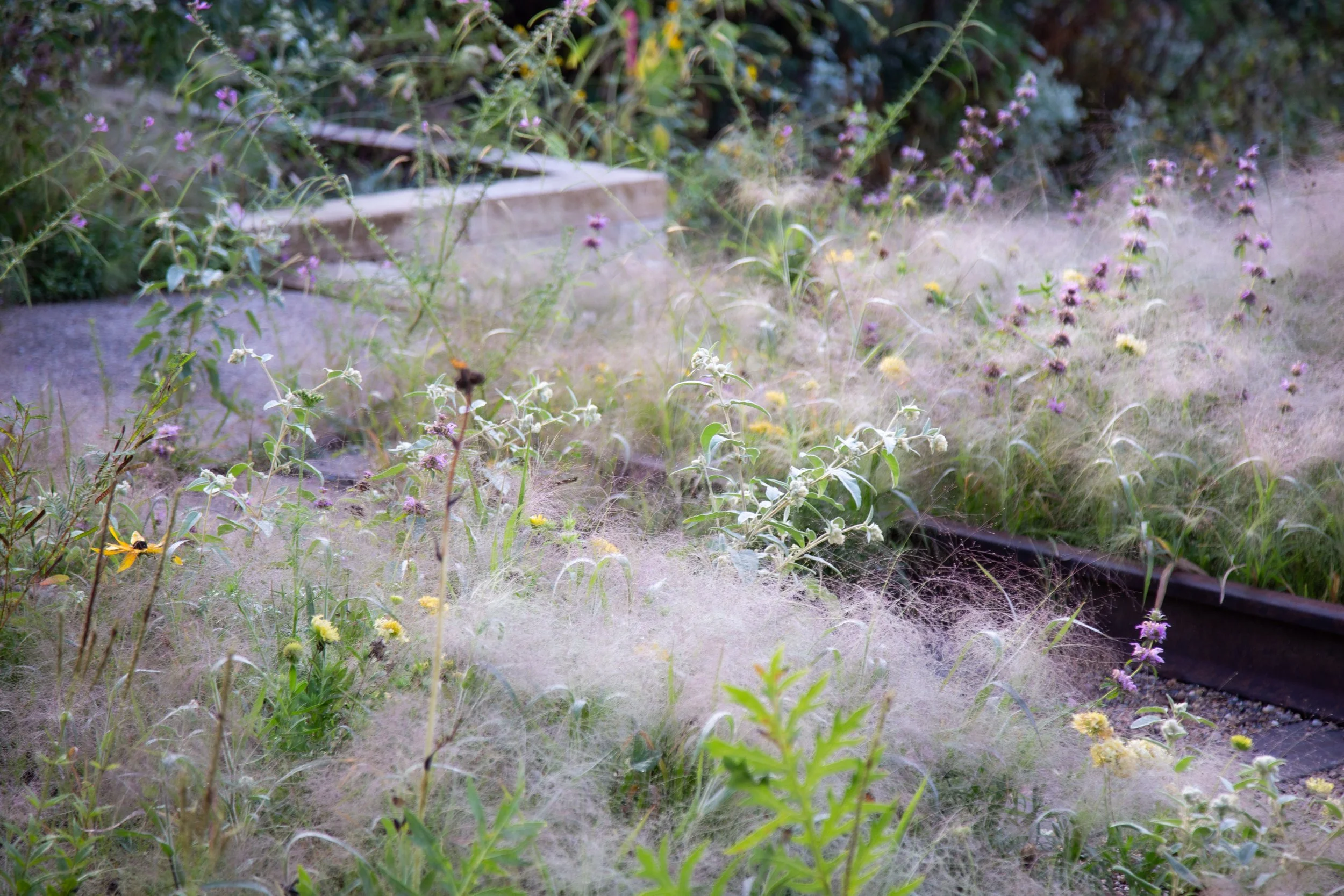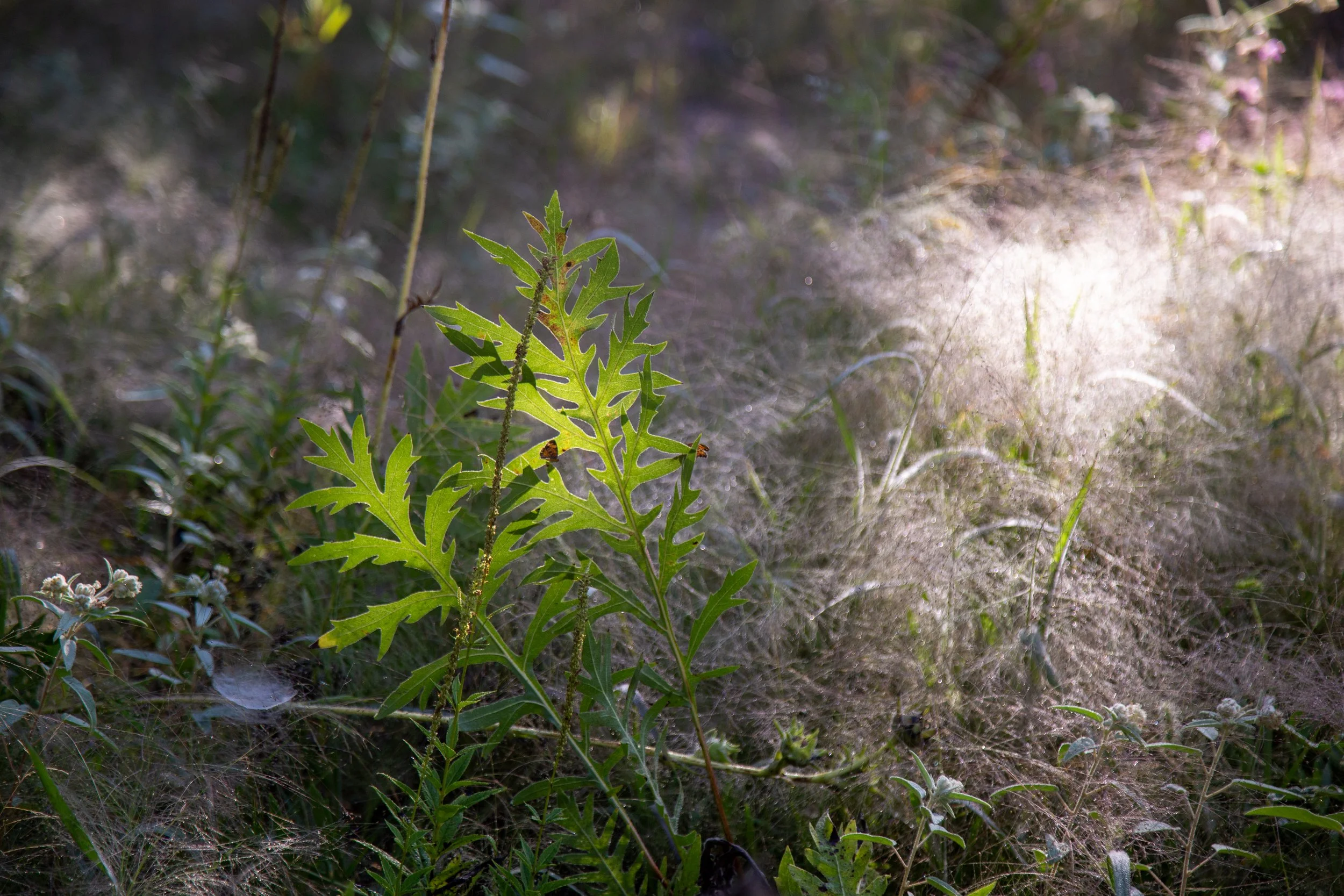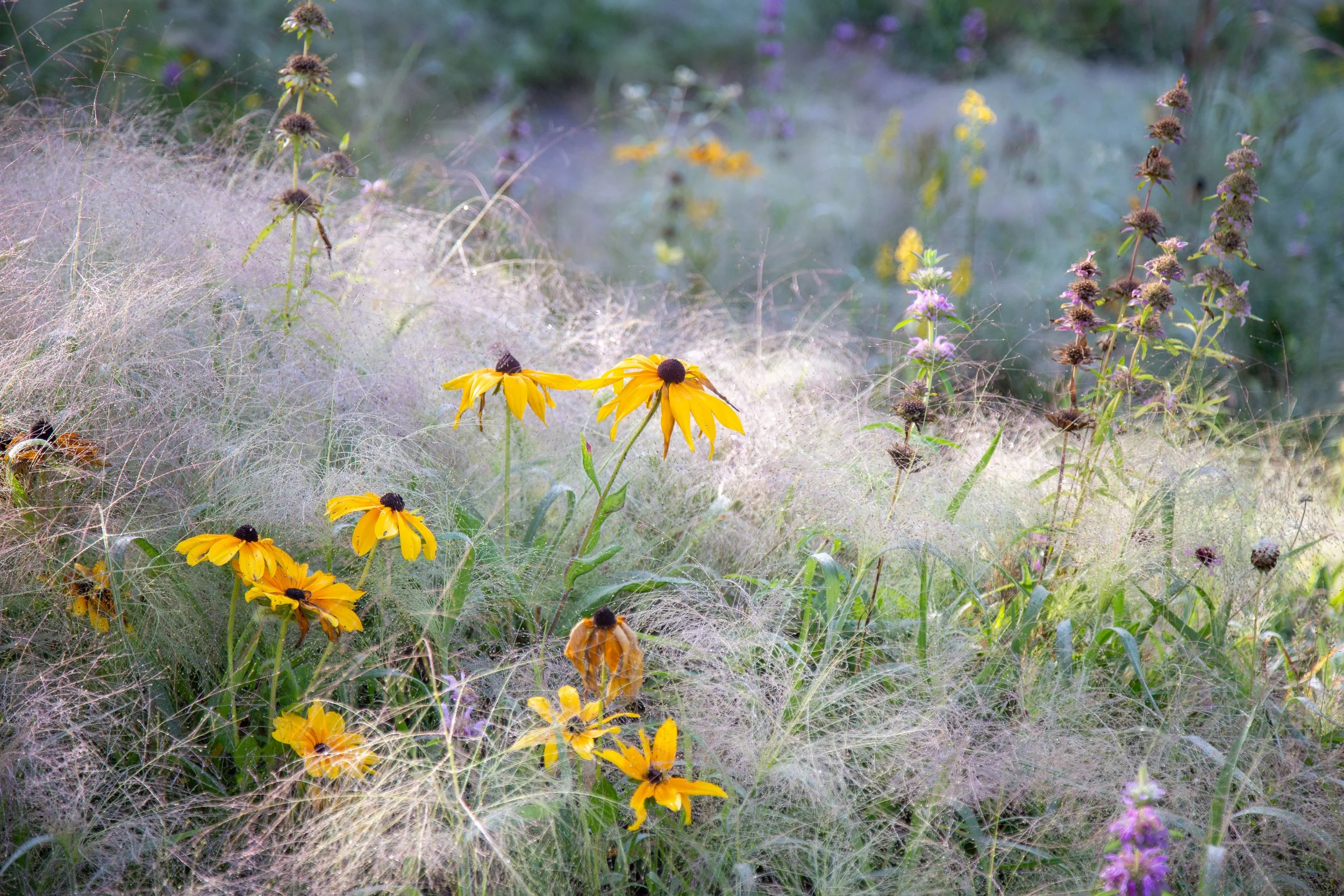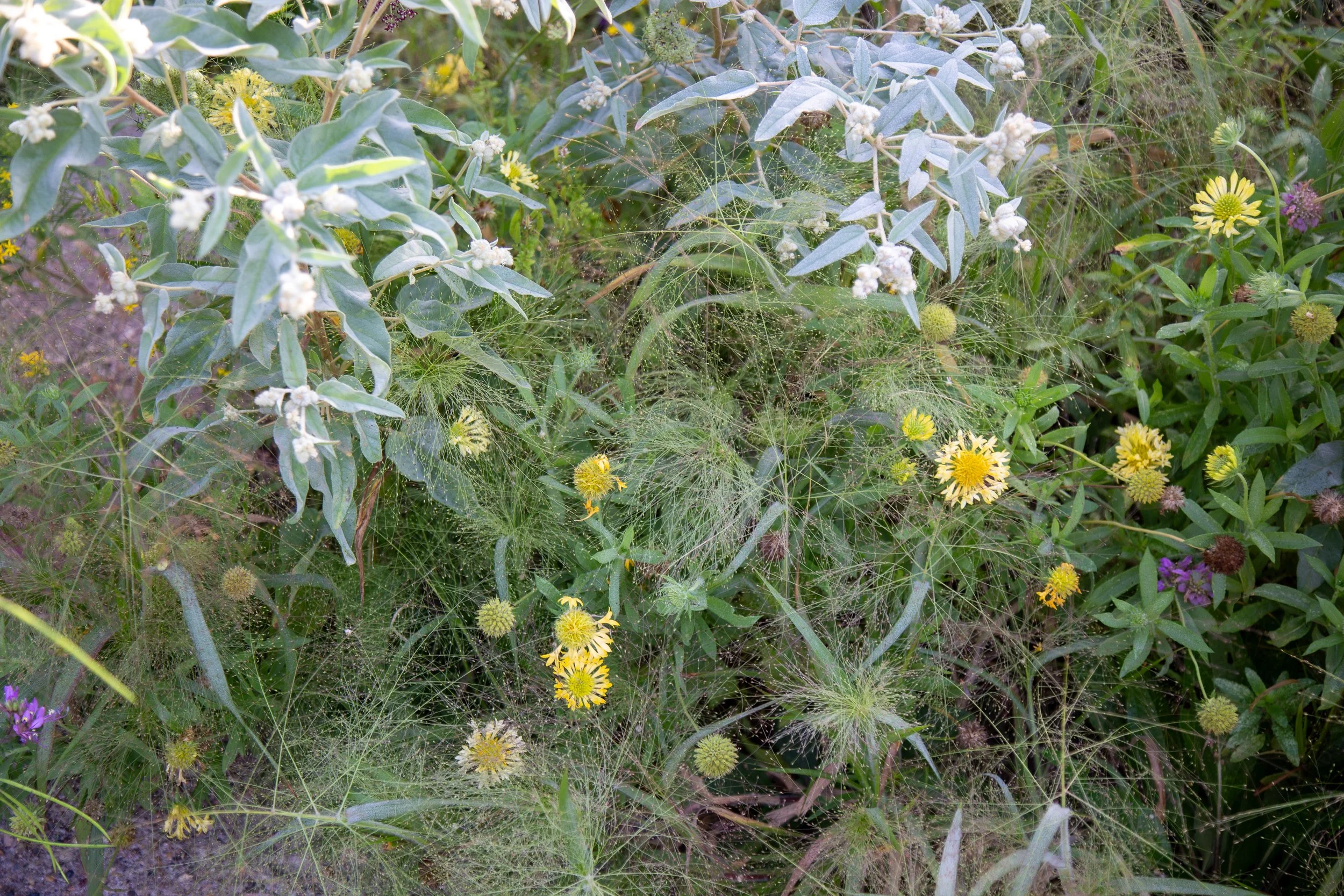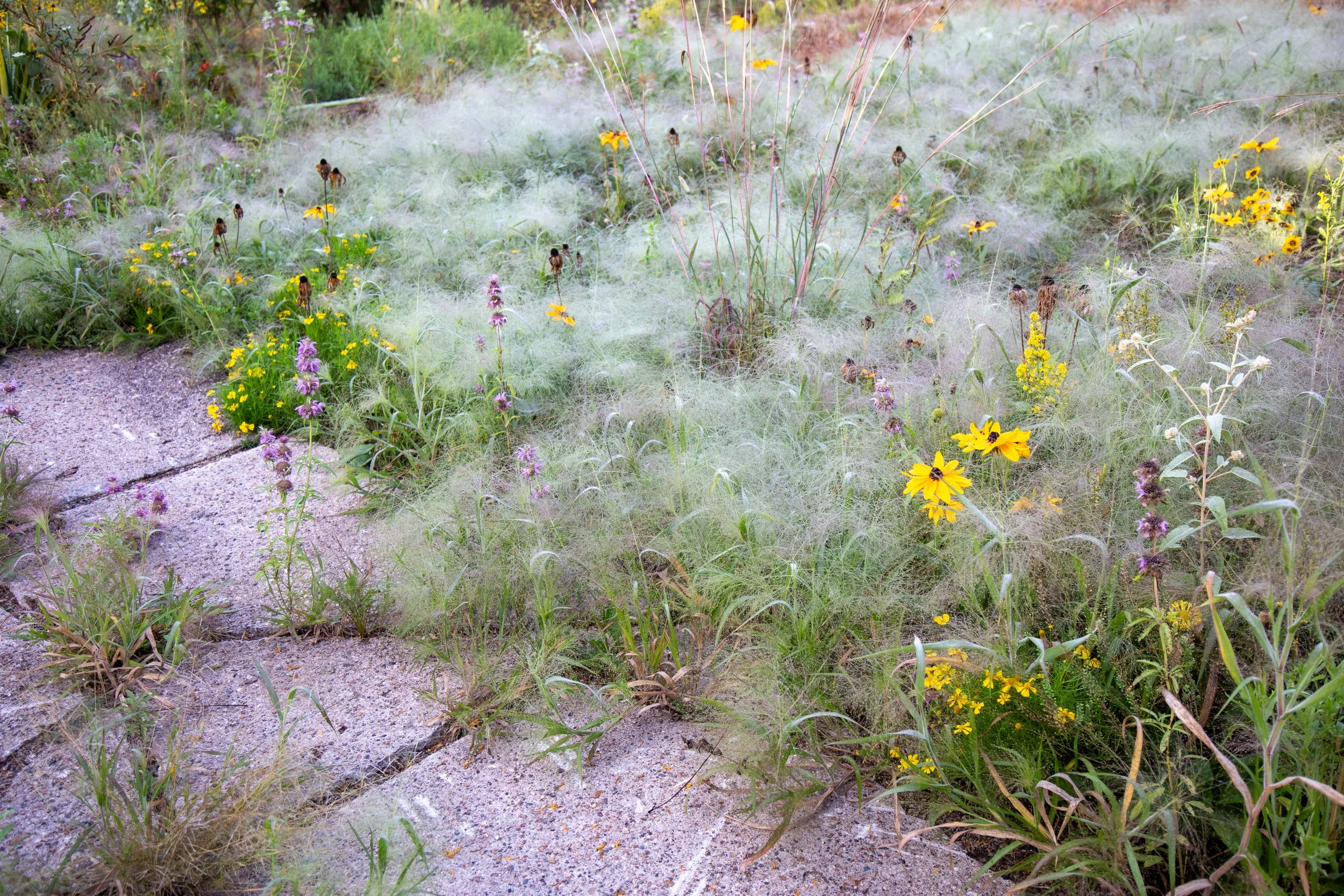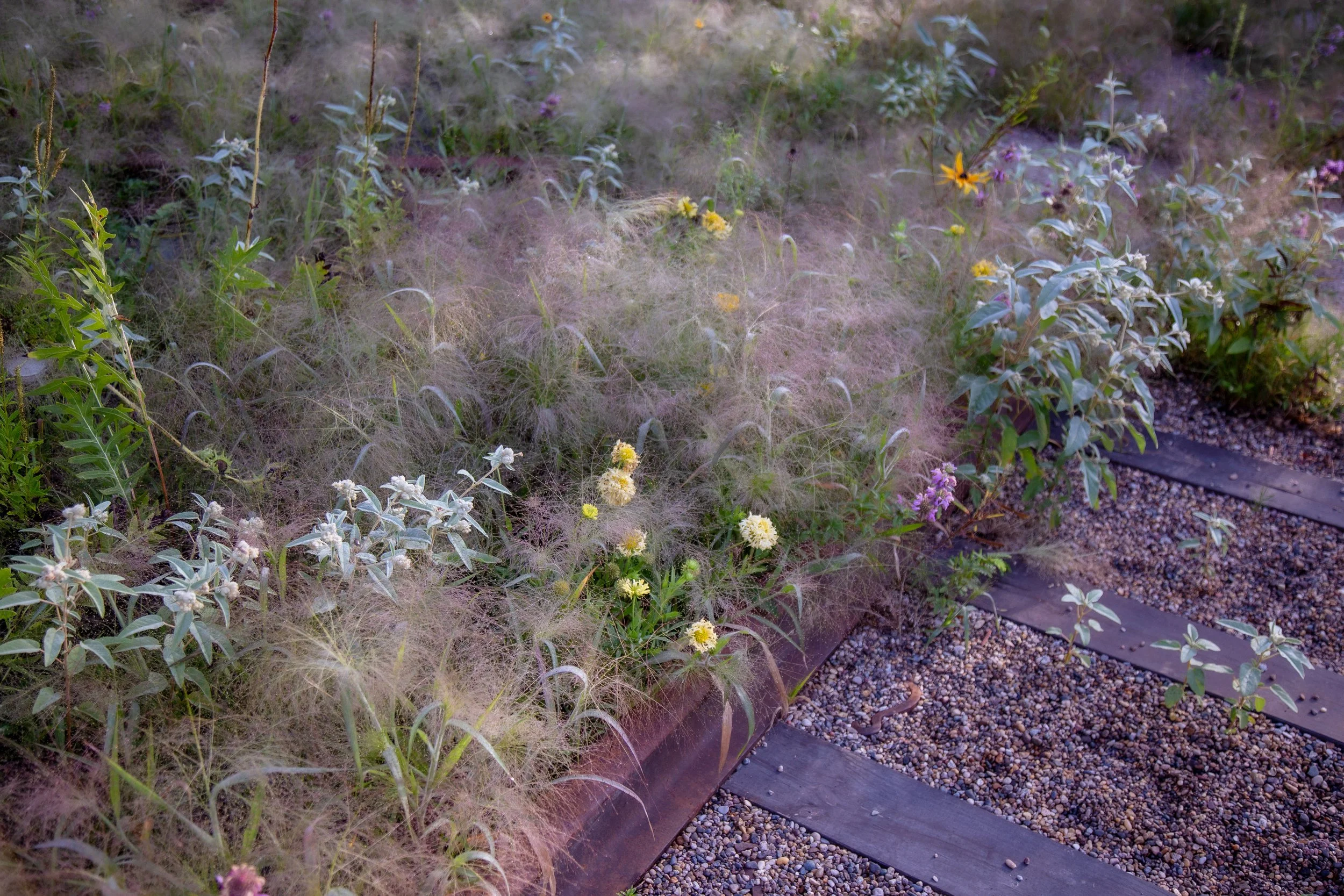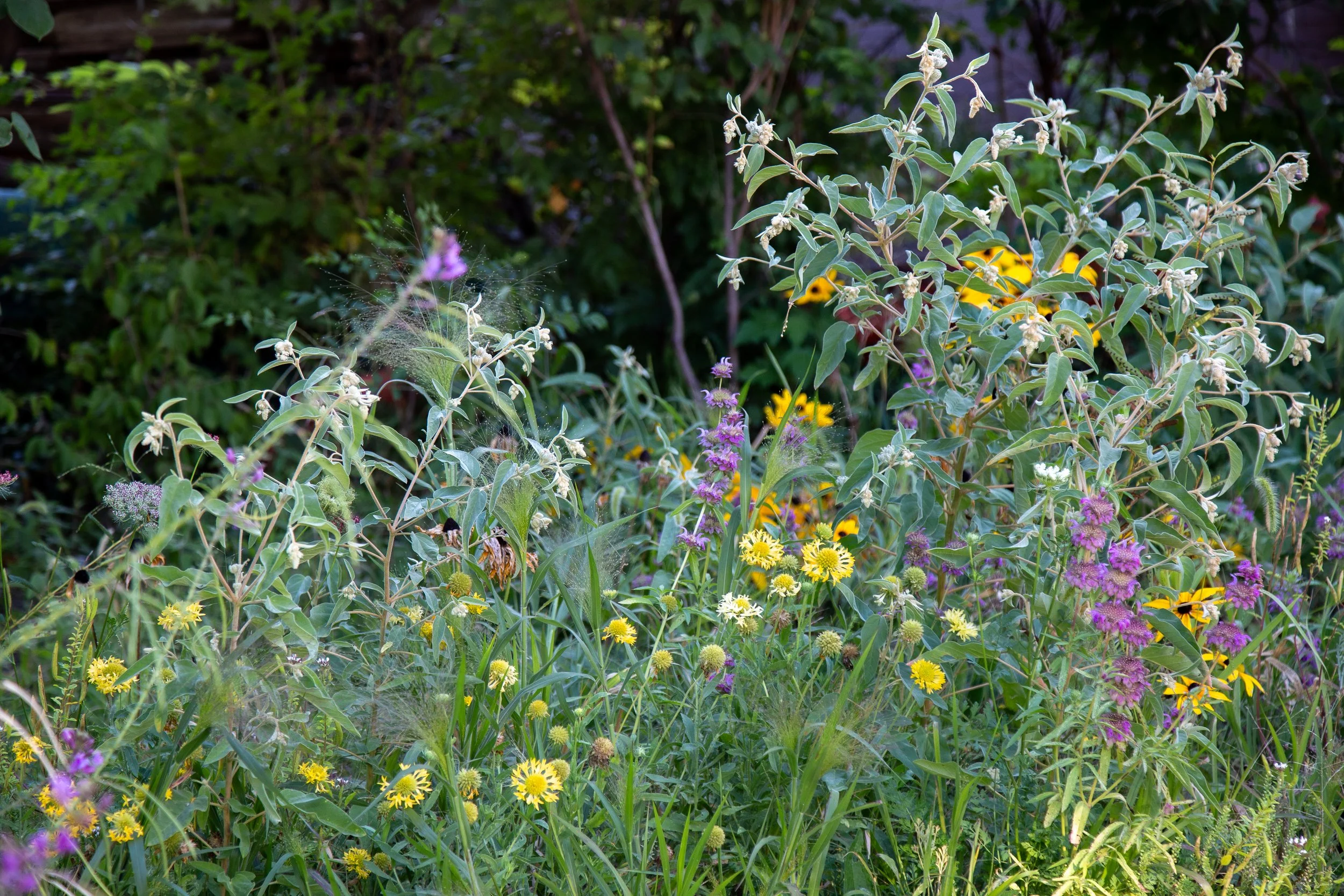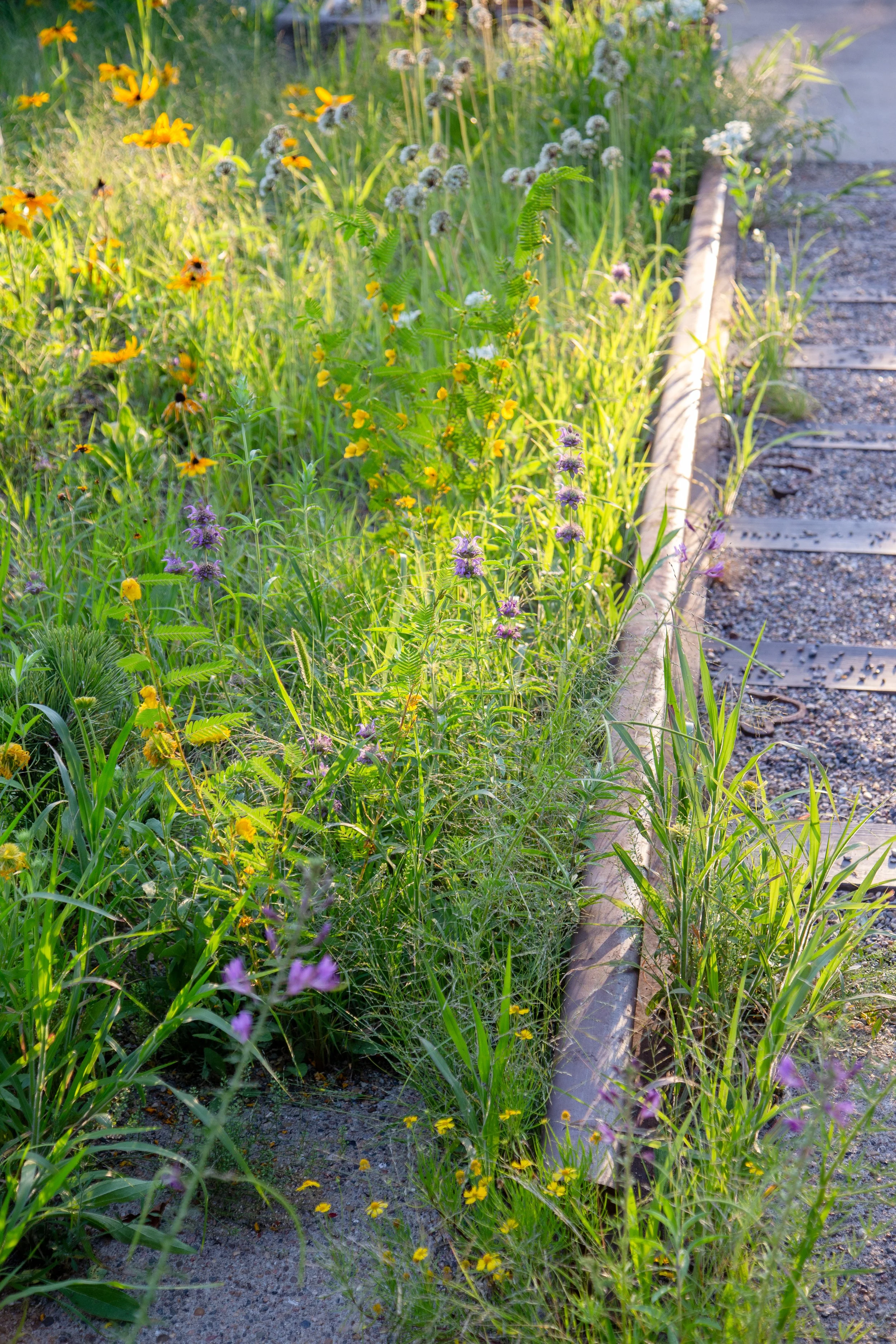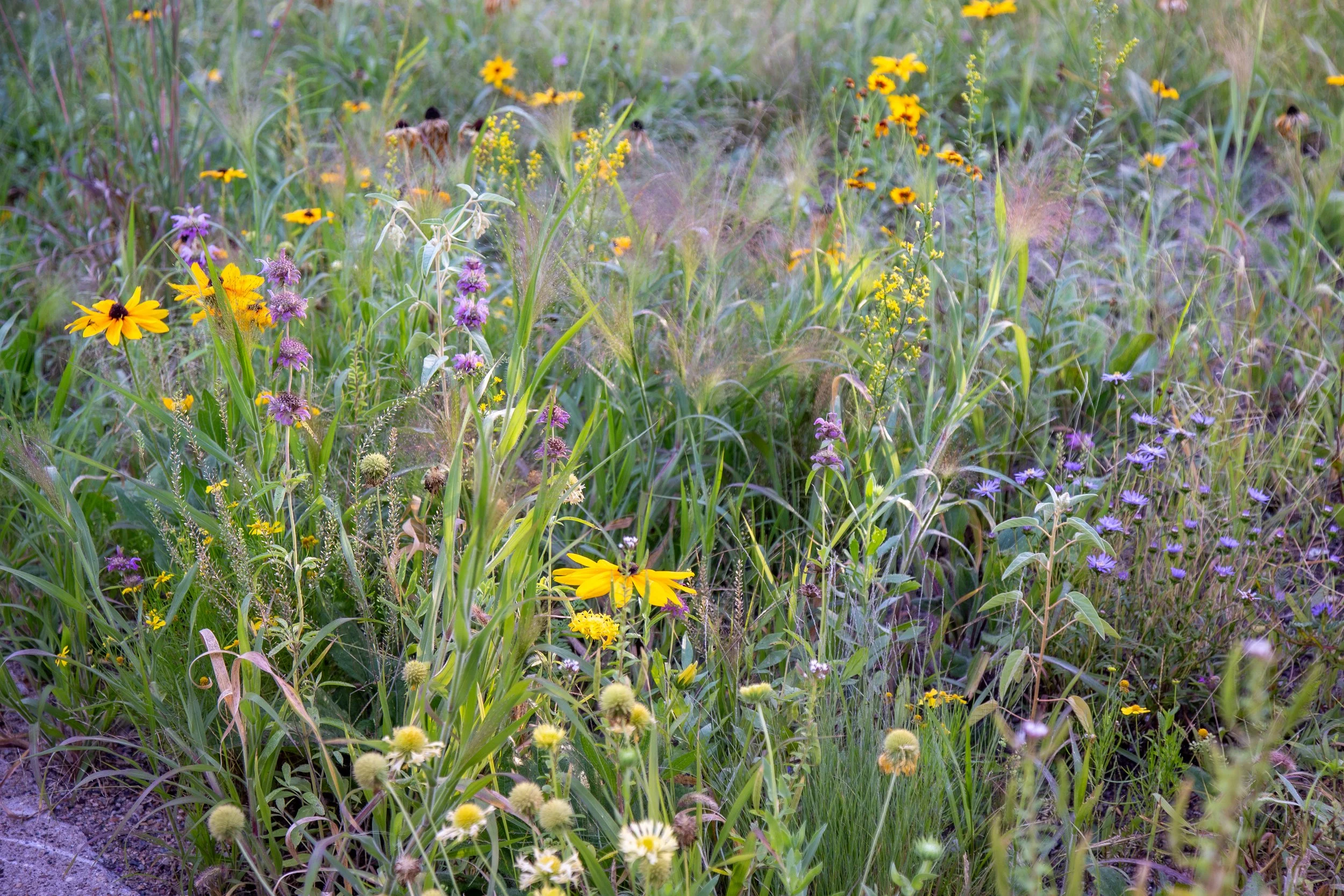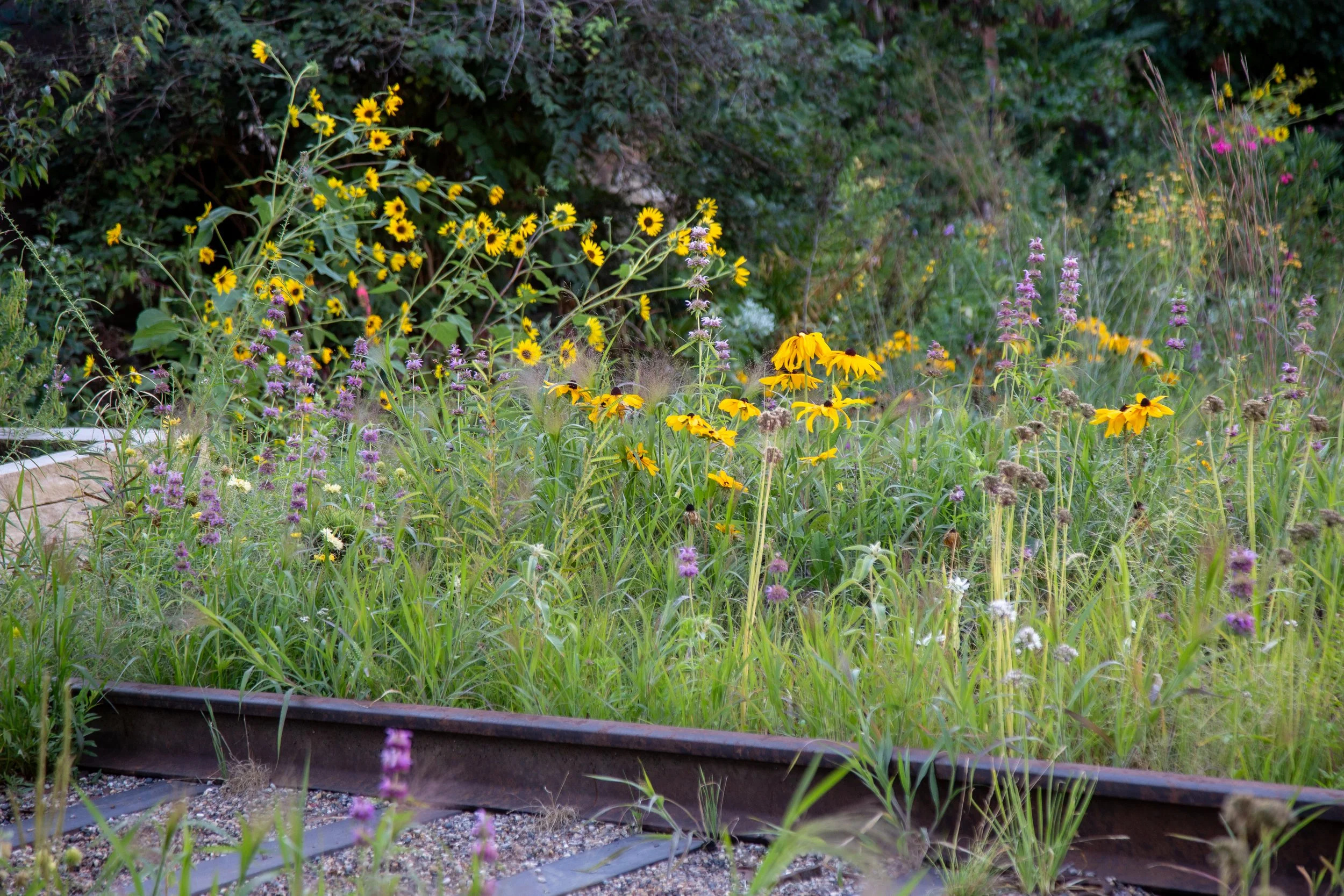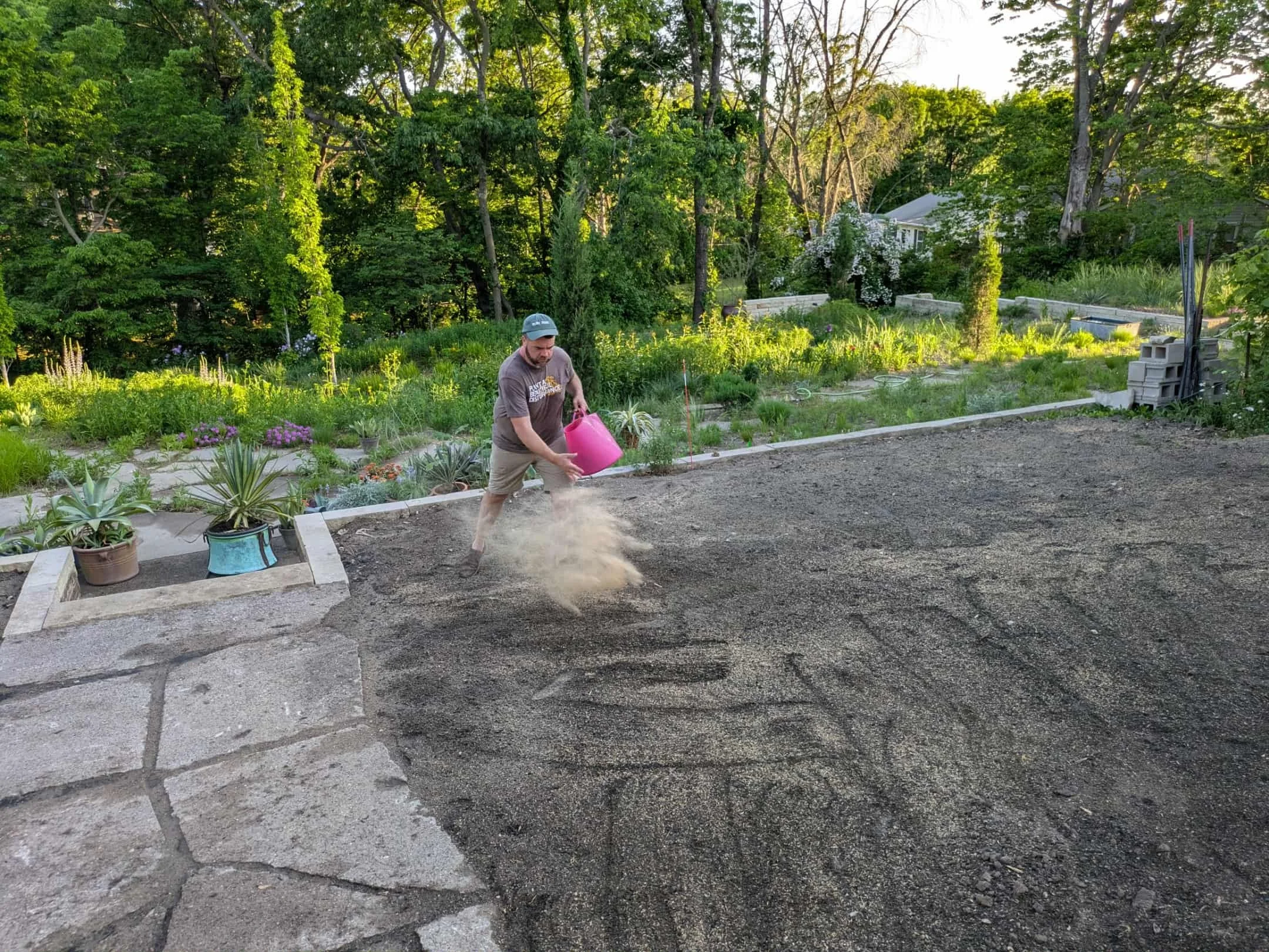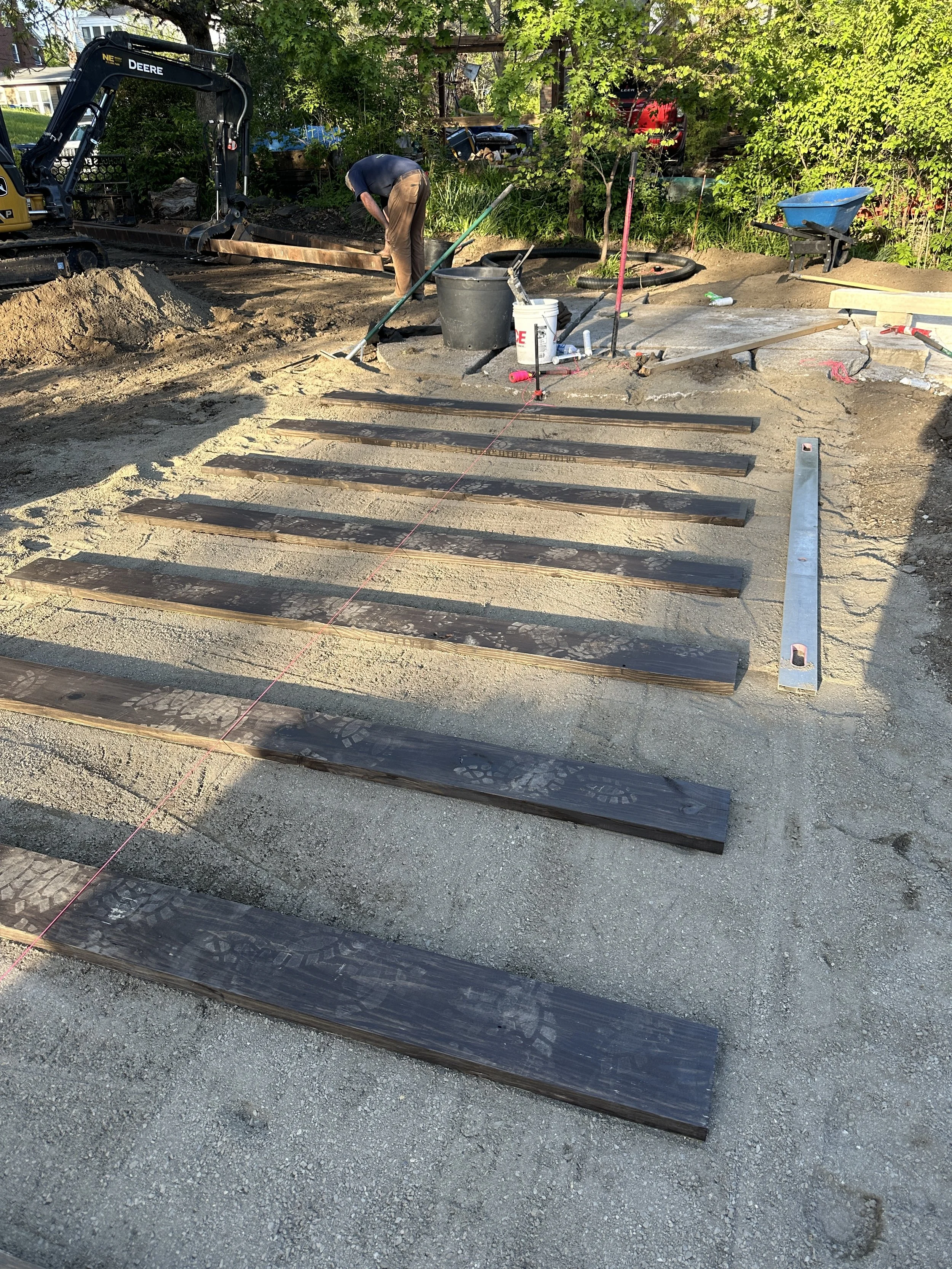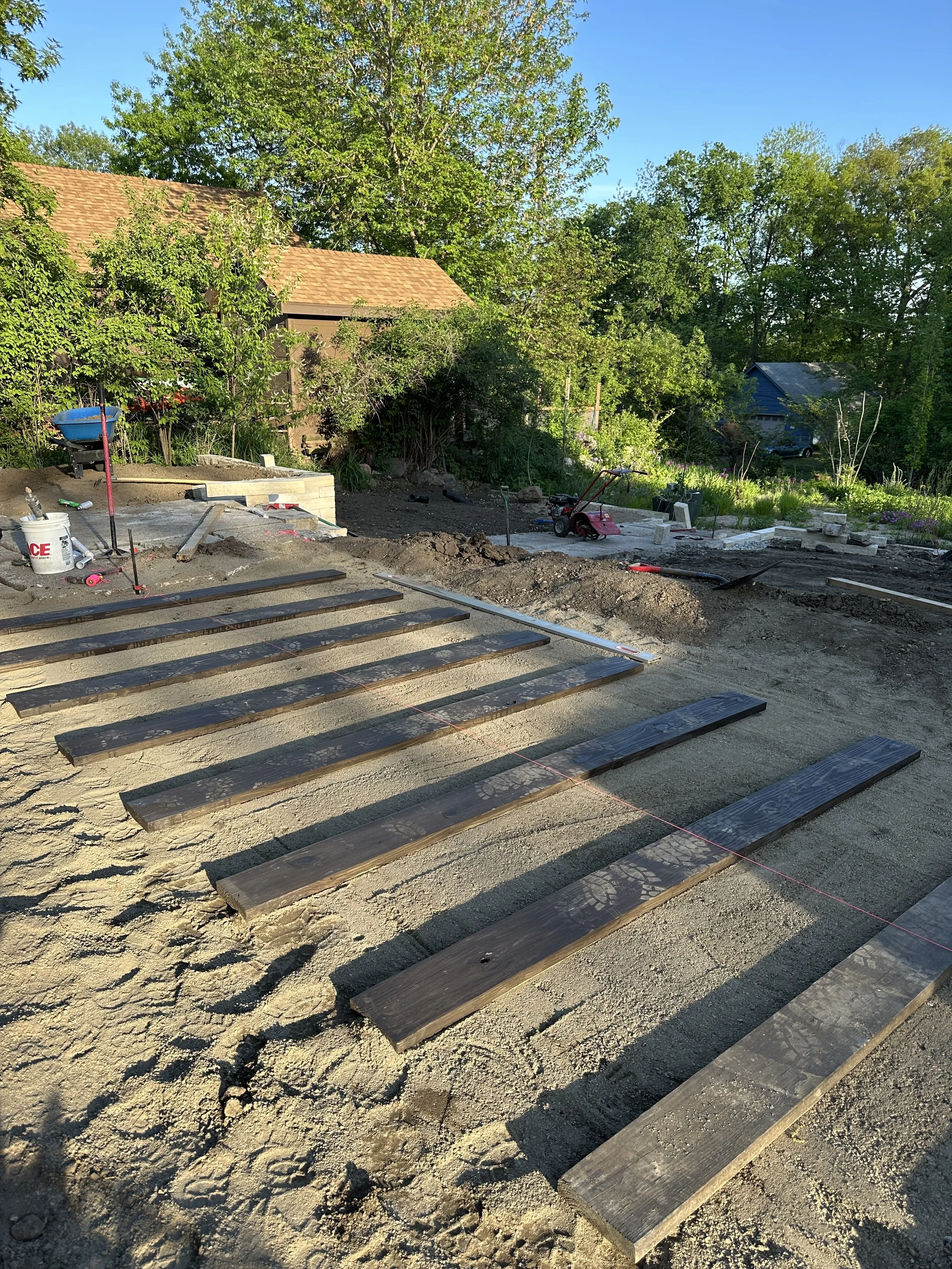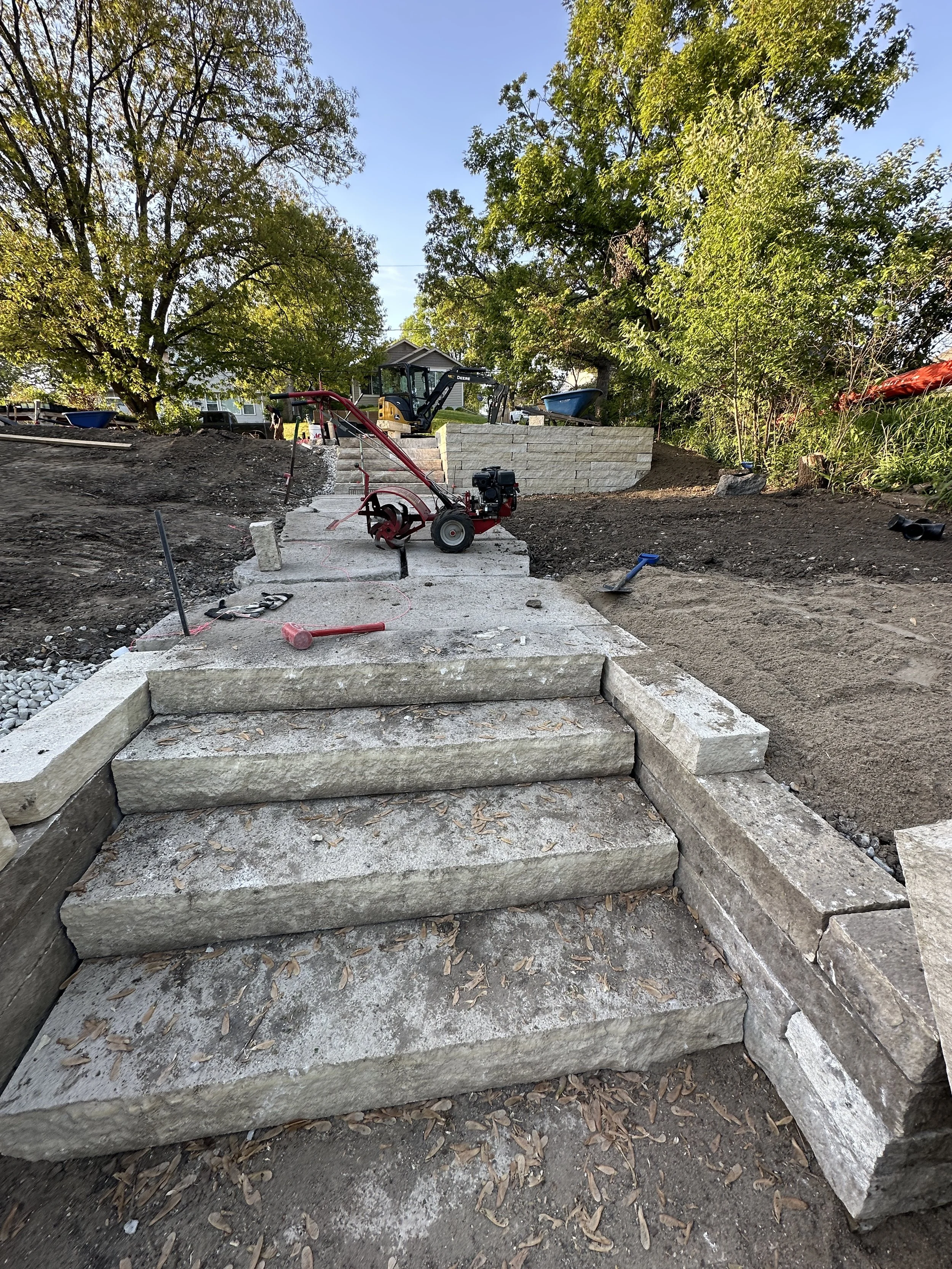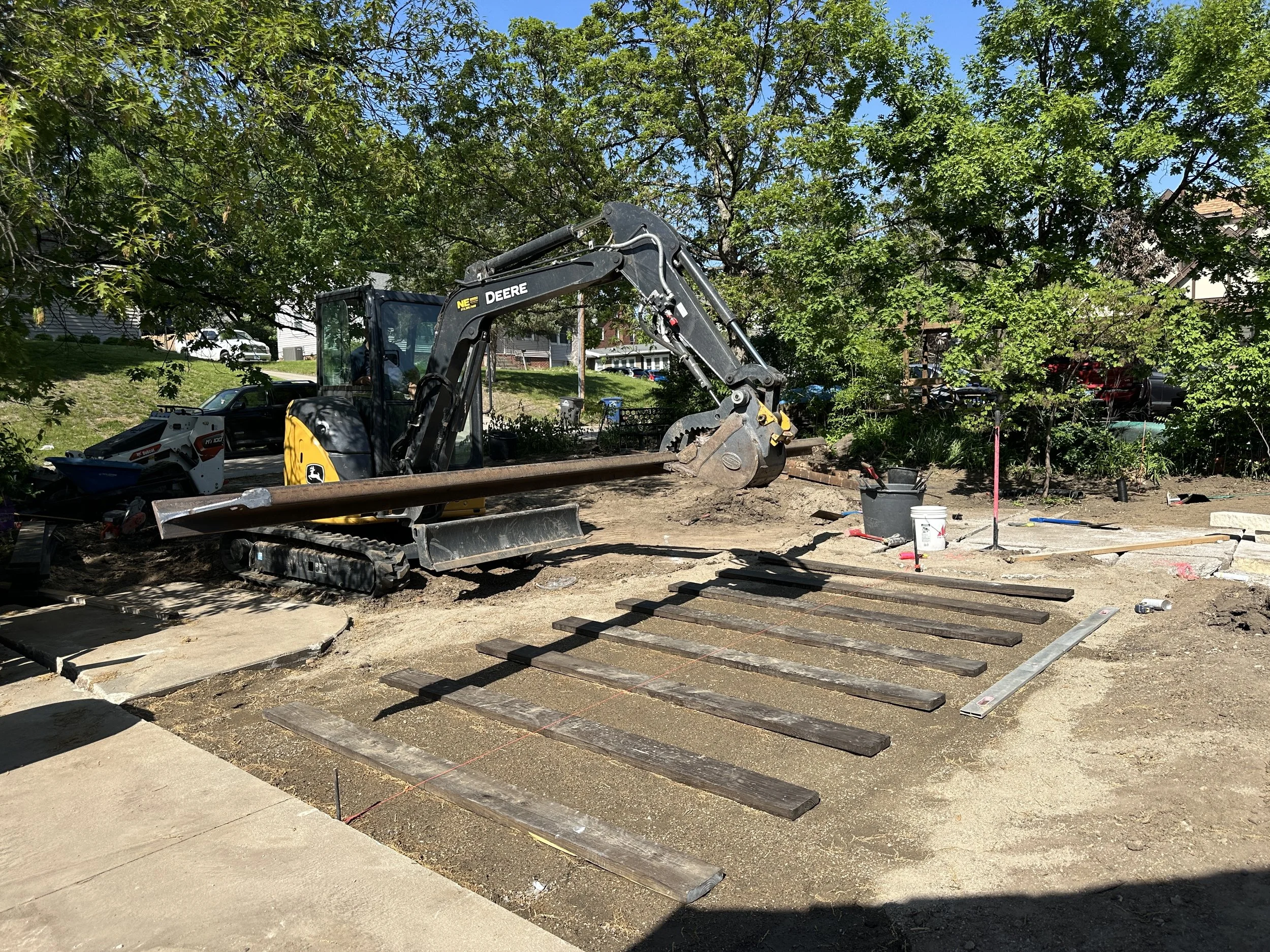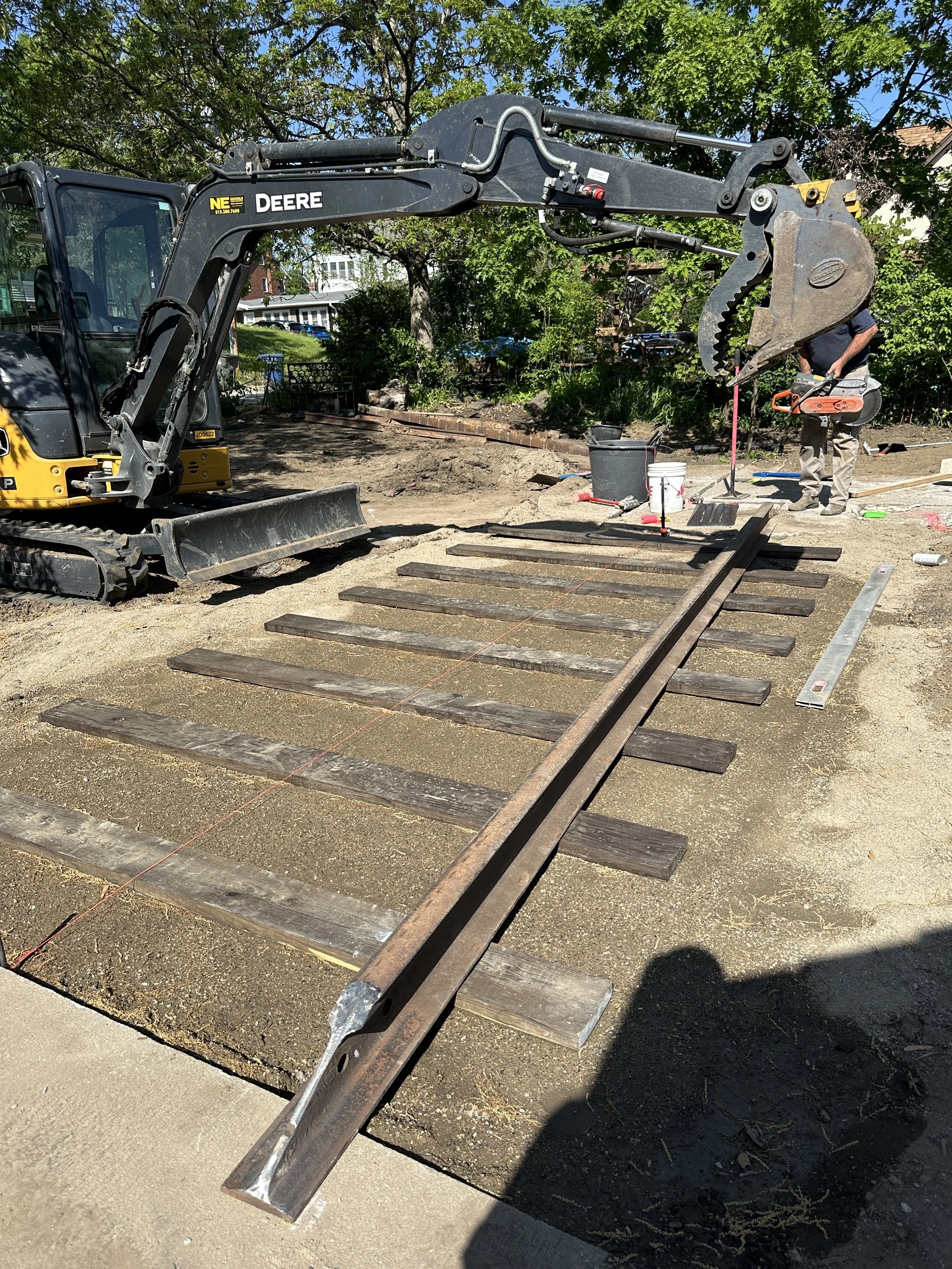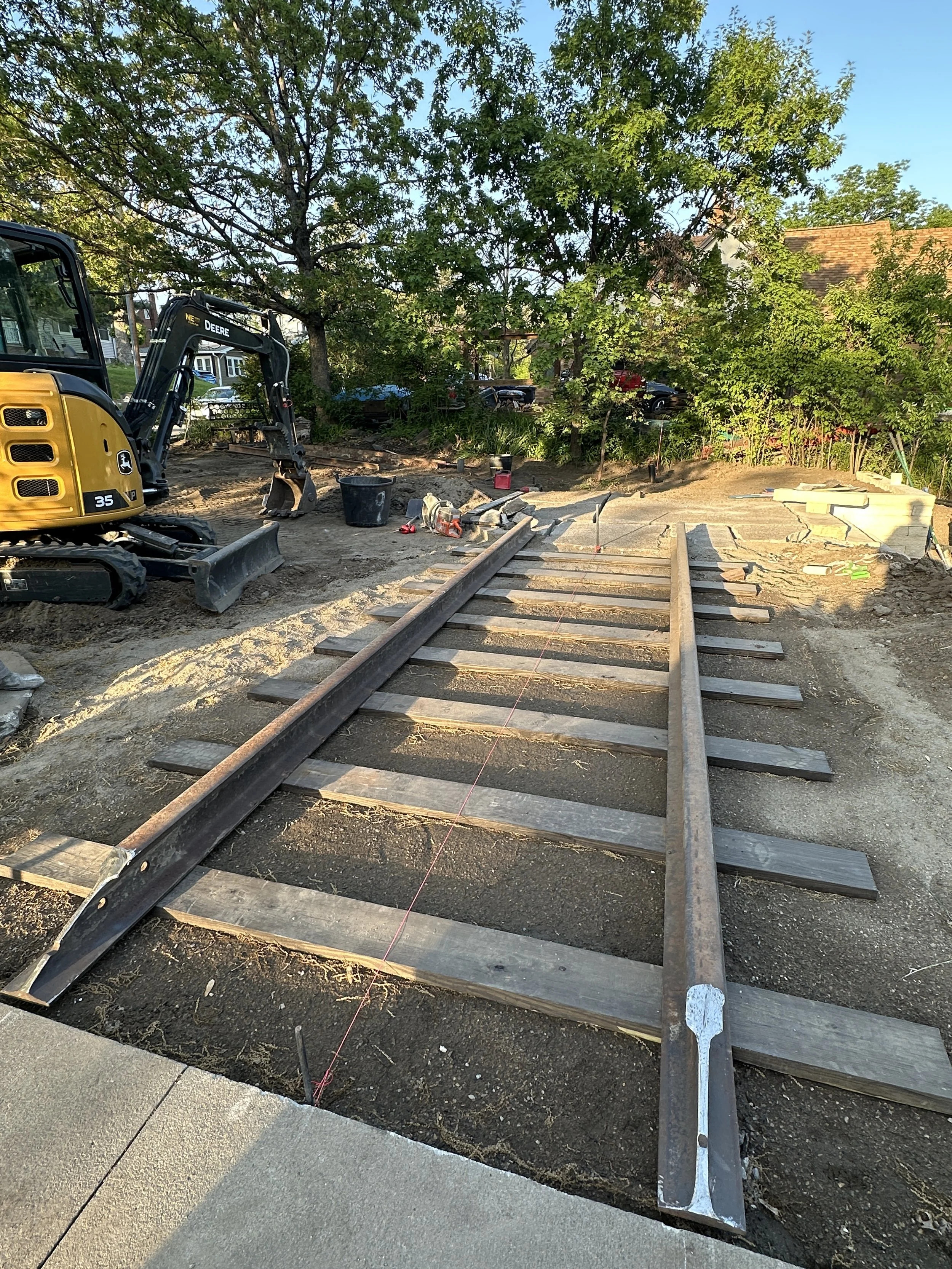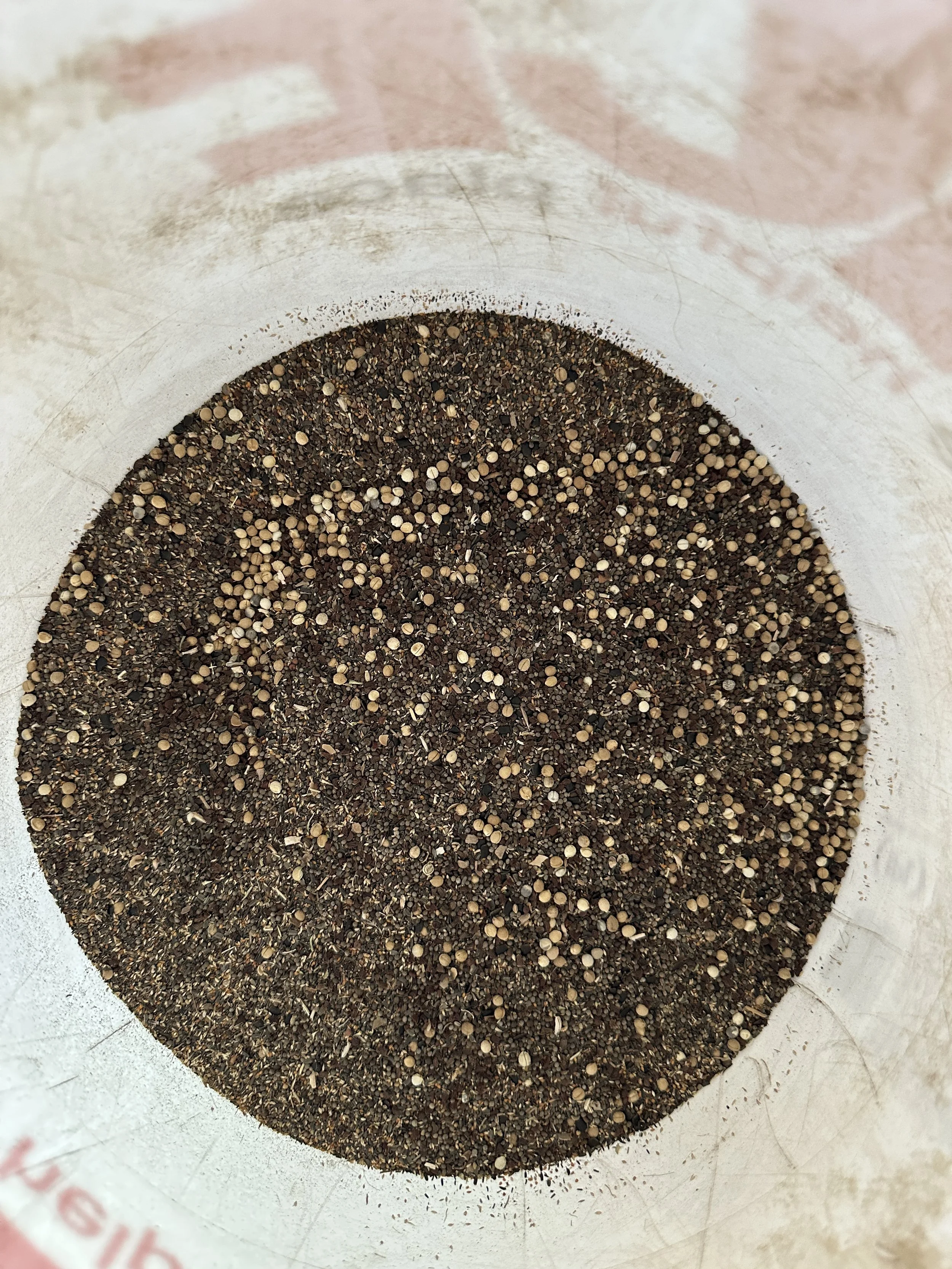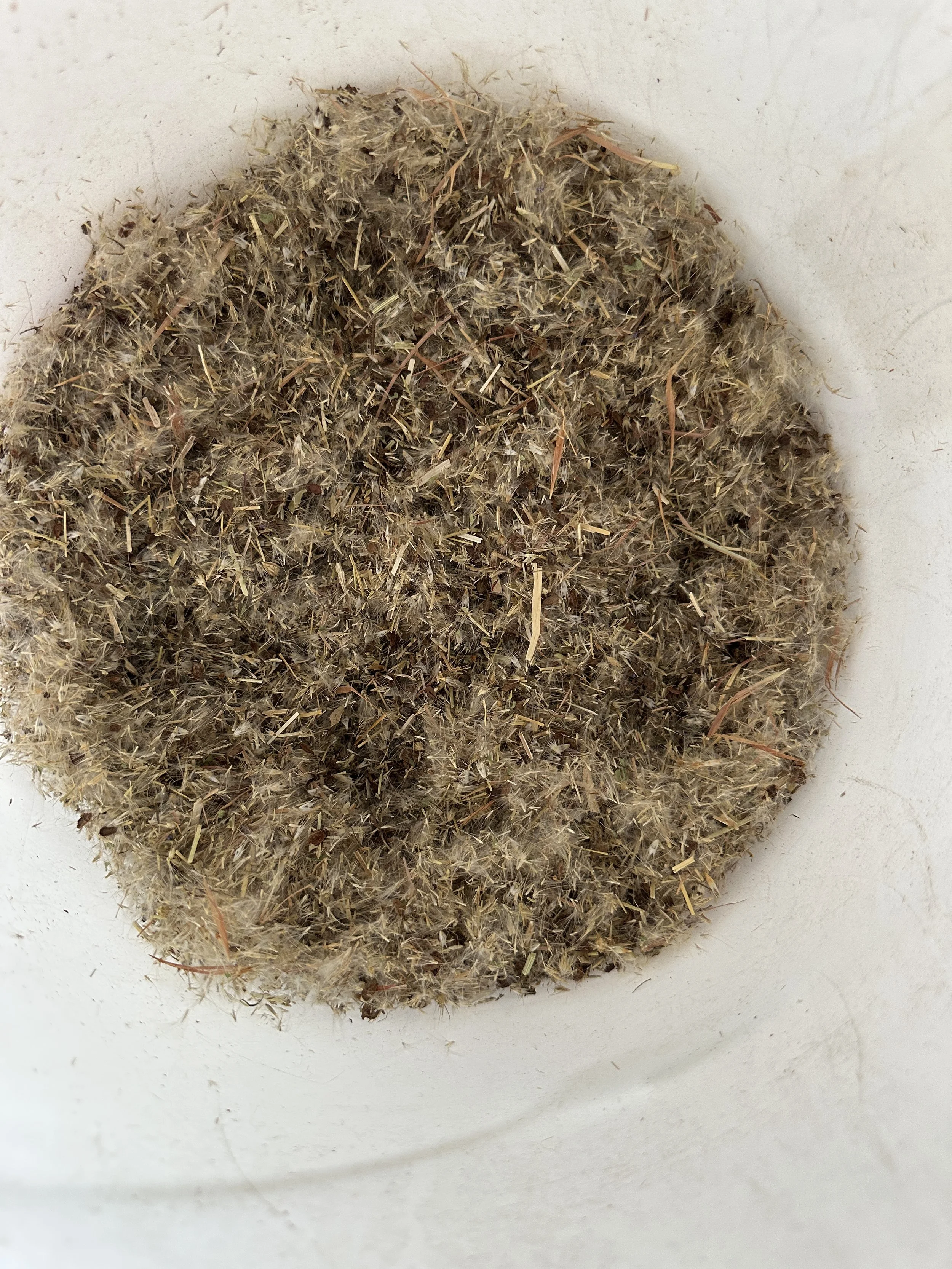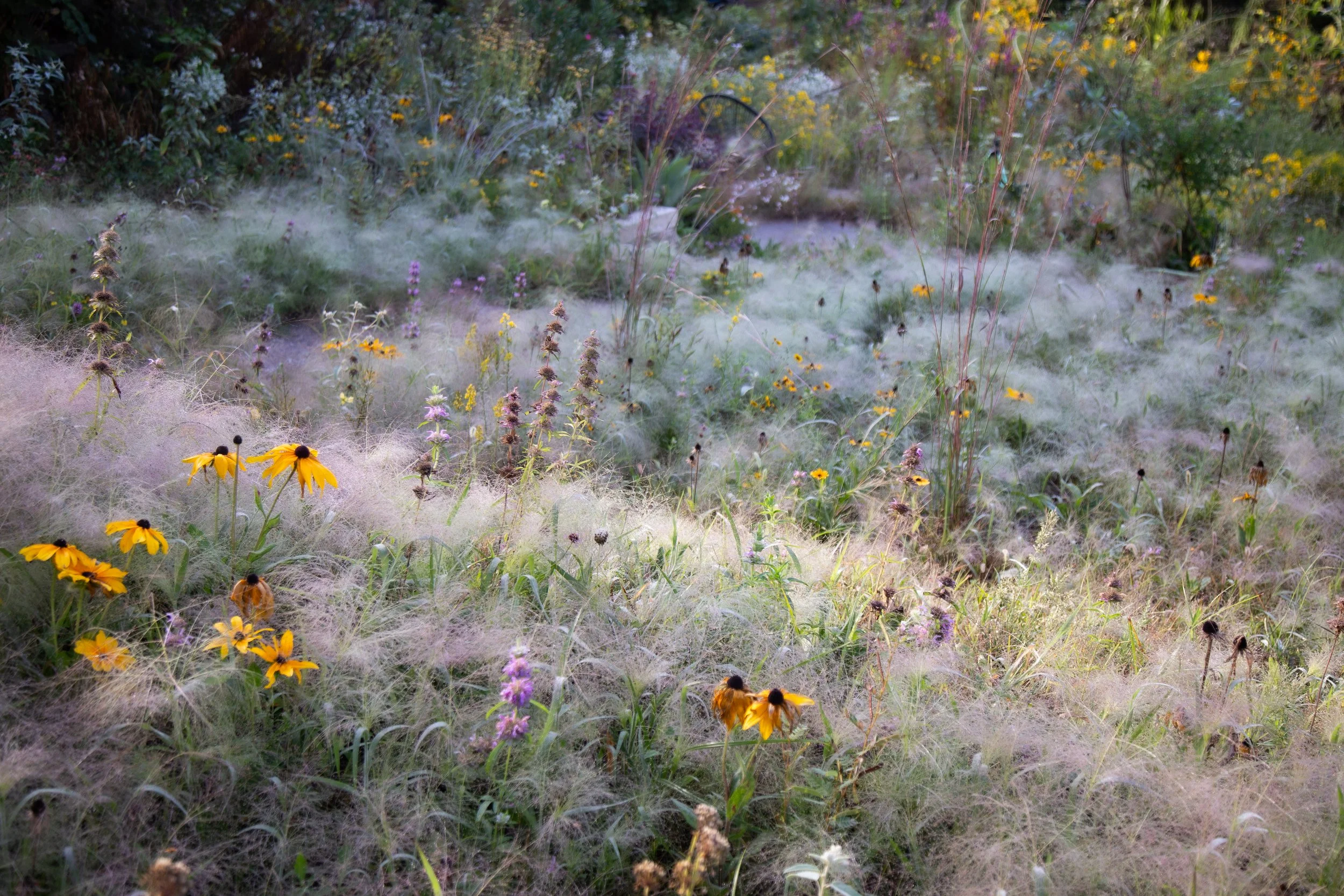
Historic ecology meets
contemporary planting design.
The Trolley Line
Des Moines, Iowa — Installed 2025
2,500 square feet of seeding and planting designed in the spirit of ruderal, railroad plant communities
The Trolley Line at Three Oaks is an experimental planting designed to explore the ecology of historic railroad corridors. The project is not only a study of ruderal dynamics but also an investigation into the ruderal picturesque. Disturbance is both integrated into the system and intentionally used as an agent to shape the ecological form. In other words, it’s both medium and muse, inviting viewers to experience beauty and find meaning in the unruly, opportunistic, and ephemeral.
Inspired by the feral, novel communities that thrived along railroad corridors in the 19th and 20th centuries, this garden recalls a time when steel tracks cut through our native prairies, rupturing indigenous ecologies and introducing new seeds in their wake. Here, on the north side of Des Moines, that history echoes through the contemporary neighborhood landscape. Once part of a “trolley car” neighborhood, the original route of the line remains in use as a utility and pedestrian trail downslope from our property. The academic literature has remarkably little to say about the ecology of railroads, despite their cultural significance in shaping America as we know it today. Roads and highways garner much more attention from researchers, despite their relatively similar ecological impacts. Since the late 19th century, botanists—sometimes directly employed by railroads—have documented novel plant assemblages along rail lines to assess the fire hazards they posed, while simultaneously documenting ecological disruptions. Their papers and proceedings proved highly informative for this project. For this project, we adopted a native and adventive plant palette observed at various times over the past 150 years in railroad environments across the upper Midwest.
Before installation, the site featured compacted, heavy clay from prior construction. To improve the seedbed, some areas were surface scarified. After constructing local limestone cheek walls and installing a recycled concrete (urbanite) path, reclaimed rails were laid on faux sleepers atop a gravel base. This became the main access path to an urbanite landing above the upper cheek wall. A second set of rails was installed at a 45-degree angle to the landing, suggesting the intersection of two lines, similar to a spur connection or a switching yard.
The garden was seeded with a designed mix, complemented by planting a handful of long-lived species via plugs and small pots. A severe rainfall event just a week after planting disturbed the seeding, requiring overseeding to ensure proper establishment. Stewardship in the first growing season (2025) included three mowings, reducing biomass by around 50% to control weeds and promote deep root growth of desirable plants. Hand weeding was limited to the margins of paths where the density of planted material was greater. Given extensive rainfall in the first eight weeks after installation, overhead irrigation was used sparingly. The ruderal plant palette is suited for disturbed, scraped, and unsettled ground. The initial germination wave included native annuals like Chamaecrista fasciculata (partridge pea), Eschscholzia californica (California poppy), and Polanisia dodecandra (redwhisker clammyweed). By late summer, a seeded matrix of Panicum capillare (witchgrass) anchored the garden with its airy, cloud-like inflorescences.



